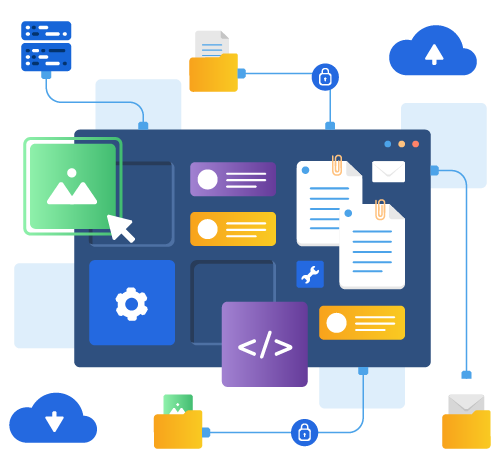How to Set Up a Mail API for Sending Direct Mail

In today’s fast-paced, technology-driven world, businesses are finding innovative ways to enhance their marketing strategies. One such advancement is the integration of a direct mail API for marketing, which allows companies to automate and streamline their direct mail campaigns. This powerful tool can be used to send postcards, brochures, thank-you letters, and more with just a few clicks, saving time and ensuring precision.
This blog will guide you through the process of setting up a mail API for sending direct mail while highlighting its benefits and potential use cases.
What Is a Direct Mail API?
A mail API, or Application Programming Interface, is a software solution that integrates with your existing systems to automate direct mail. It eliminates the manual steps traditionally involved in designing, printing, and sending mail by connecting your systems directly with printing and mailing services.
Businesses use direct mail API for marketing to simplify their customer outreach efforts, ensuring timely delivery of marketing materials and personalized messages.
Why Use a Direct Mail API?
Implementing a mail API offers numerous advantages, such as:
- Automation: No need for manual intervention—set up the process once and let the API handle repetitive tasks.
- Scalability: Whether you’re sending a single thank-you letter or thousands of marketing postcards, an API can scale to meet your needs.
- Personalization: Use your customer data to send personalized content that resonates with your audience.
- Cost Efficiency: Save on resources by automating tasks and reducing the risk of errors.
Direct mail APIs are particularly valuable for businesses looking to send personalized thank you letters to donors, loyalty rewards, or targeted marketing campaigns.
How to Set Up a Mail API for Sending Direct Mail
Setting up a direct mail API is straightforward if you follow these steps:
1. Choose the Right Mail API Provider
The first step is to select a reliable mail API provider. Consider the following factors when making your decision:
- Features: Does the API support the types of mail you want to send, such as postcards, letters, or brochures?
- Ease of Integration: Look for APIs with comprehensive documentation and user-friendly interfaces.
- Pricing: Ensure the pricing aligns with your budget and expected usage.
- Support: Check if the provider offers robust customer support and troubleshooting.
For example, PostGrid provides an intuitive direct mail API for marketing that integrates seamlessly with various CRM and marketing tools, making it a popular choice for businesses.
2. Set Up Your API Credentials
Once you’ve chosen your API provider, you’ll need to create an account and obtain your API credentials, which typically include:
- An API key: A unique identifier that authenticates your account.
- Endpoint URLs: Addresses to which your system will send requests.
Keep your API credentials secure to prevent unauthorized access.
3. Integrate the API With Your System
The next step is to integrate the API into your existing software. Common integration points include:
- CRM Platforms: Use the API to send direct mail to your contact lists.
- E-commerce Platforms: Automate sending thank-you notes or promotional offers to customers.
- Custom Applications: Build tailored solutions for specific business needs.
Follow the API documentation provided by your vendor for step-by-step integration guidance.
4. Test Your Setup
Before sending your first batch of direct mail, test the API integration thoroughly:
- Send a test mailpiece to ensure accuracy.
- Verify that your personalization fields (e.g., names, addresses) populate correctly.
- Check the delivery timeline to confirm it meets your expectations.
Testing helps identify and resolve any issues before launching your campaign.
5. Launch Your Campaign
Once everything is tested and working, you’re ready to go live. Schedule your mailings based on your campaign strategy, and monitor performance through the API’s analytics dashboard.
Use Cases for Direct Mail API
Direct mail APIs can be utilized in a variety of ways, including:
1. Thank You Letters
Expressing gratitude is vital for fostering long-term relationships. For example, nonprofits can use an API to send a thank you letter to donors, ensuring that supporters feel valued and appreciated. Automating this process saves time while maintaining a personal touch.
2. Marketing Campaigns
From promoting new products to retargeting past customers, direct mail APIs enable businesses to execute targeted campaigns efficiently. By connecting the API to your CRM, you can send personalized marketing materials that resonate with your audience.
3. Event Invitations
Hosting an event? Use the API to send personalized invitations that include RSVP links or QR codes, blending traditional mail with digital convenience.
4. Customer Retention
Mail APIs are perfect for sending loyalty rewards, anniversary greetings, or re-engagement letters to customers who’ve been inactive.
Tips for Optimizing Your Mail API
To get the most out of your mail API, consider these best practices:
- Keep Your Data Updated: Use an address validation tool to ensure accurate delivery.
- Leverage Personalization: Add customized messages and design elements to boost engagement.
- Monitor Performance: Track metrics like delivery rates and campaign ROI to measure success.
- Segment Your Audience: Group your recipients based on demographics or behavior to send targeted content.
Getting Started with a Direct Mail API
Implementing a mail API may seem daunting at first, but with the right provider and a clear plan, it’s a game-changer for businesses. From sending personalized thank-you letters to executing large-scale marketing campaigns, the possibilities are endless.
Explore PostGrid’s robust direct mail API for marketing here and see how it can transform your communication strategy.
By automating your direct mail process, you can focus on what truly matters: building meaningful connections with your audience.
A well-configured mail API ensures that your campaigns run smoothly and deliver the desired impact, making it an invaluable tool for modern businesses. Start today, and let your direct mail campaigns reach new heights!




